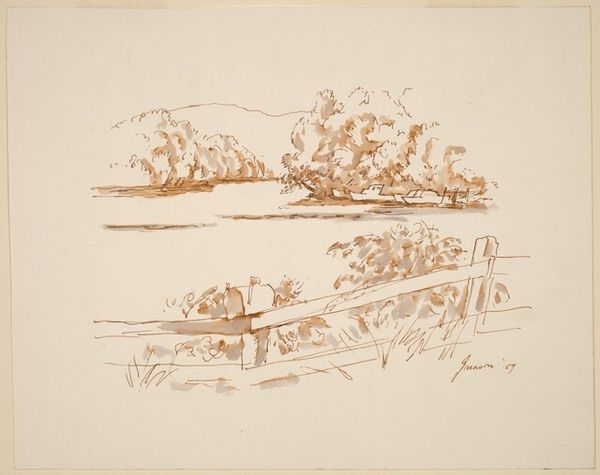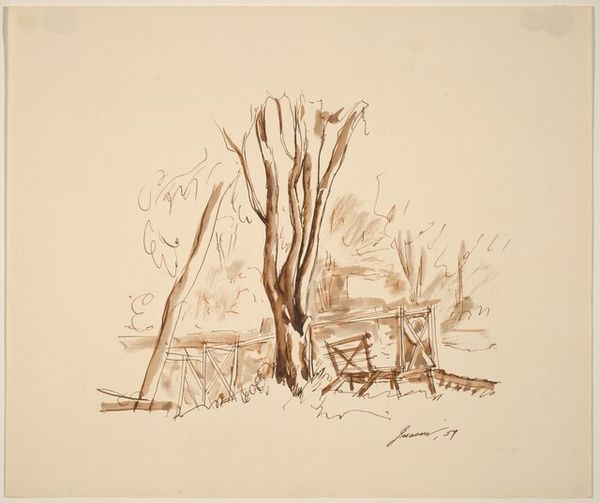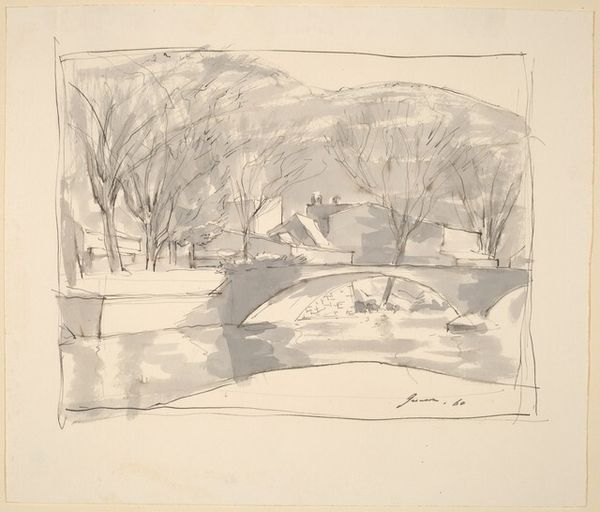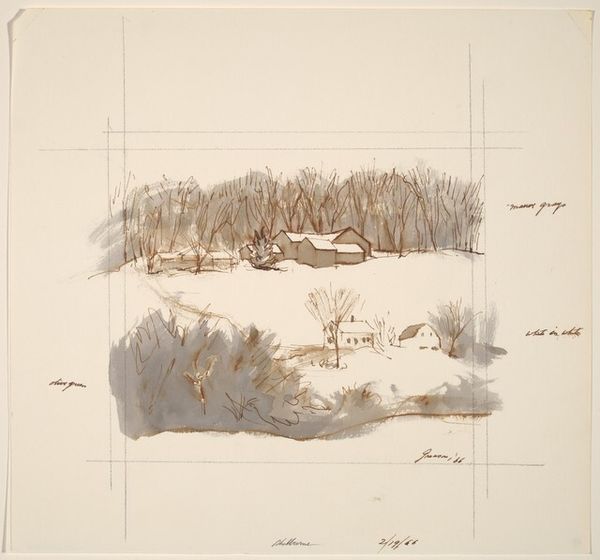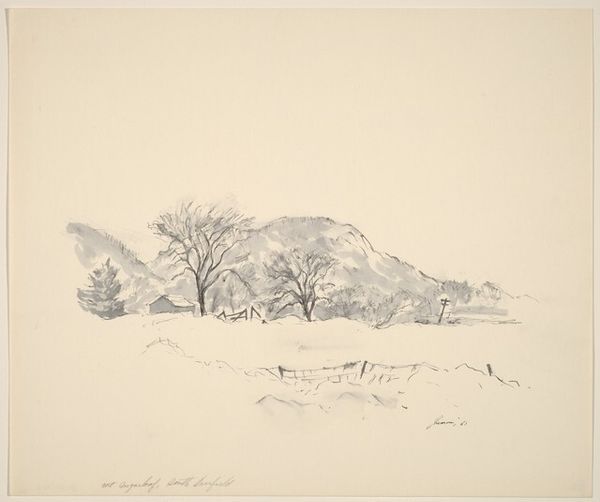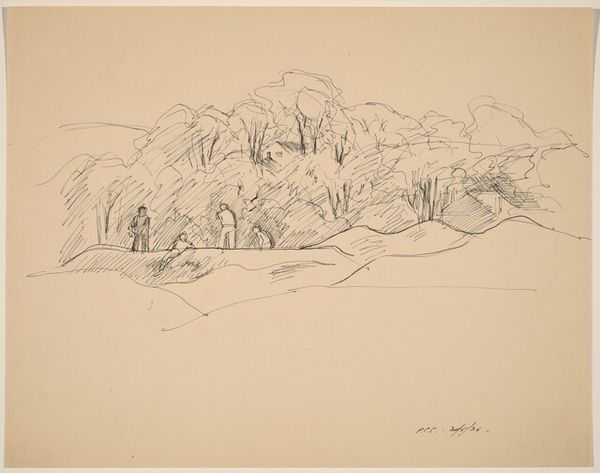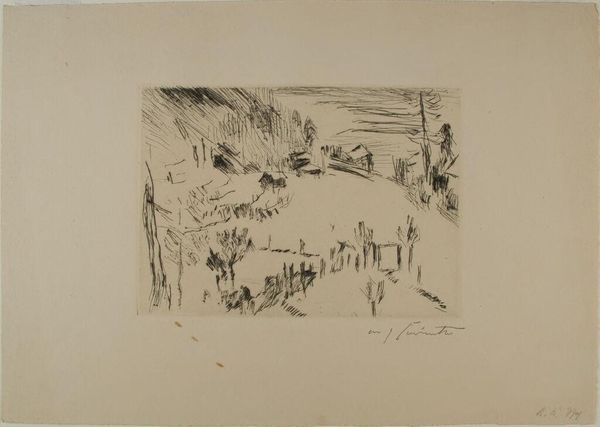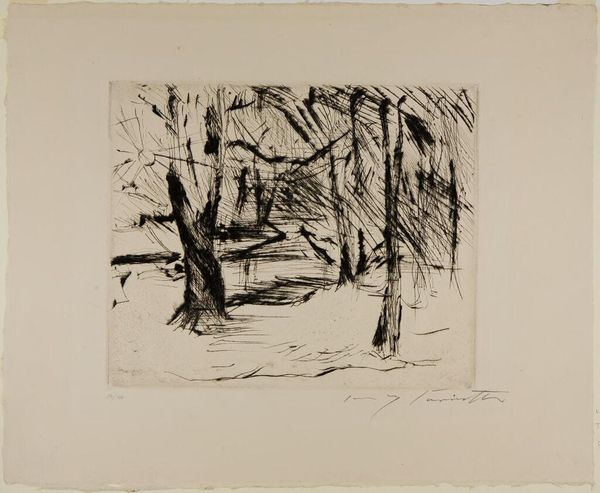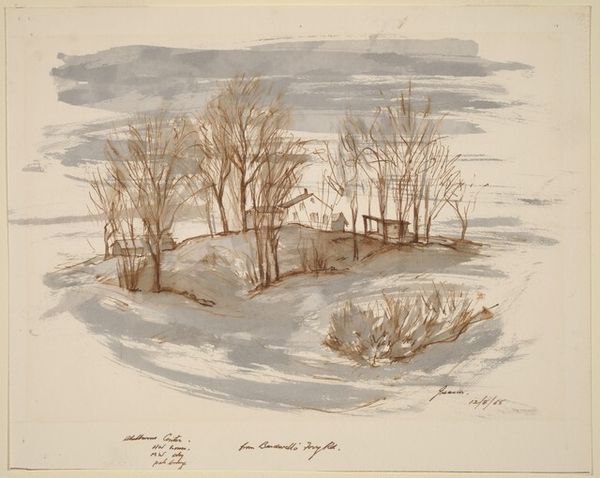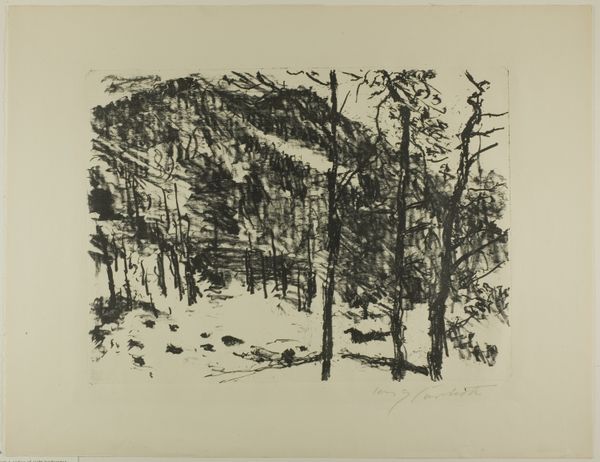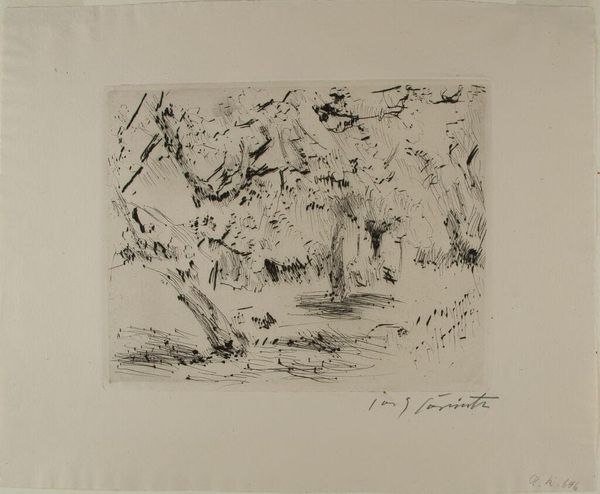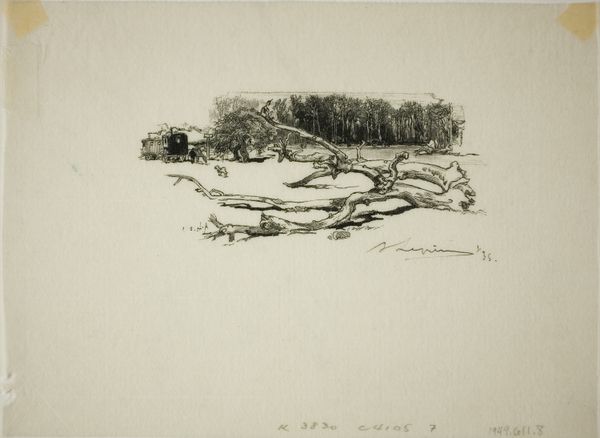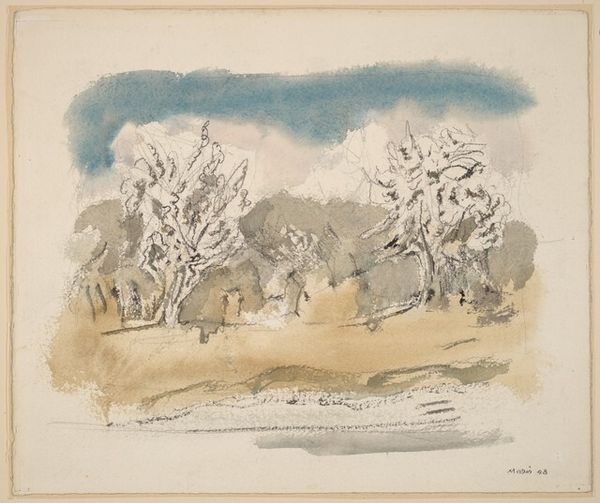
drawing, plein-air, watercolor, ink
#
drawing
#
contemporary
#
plein-air
#
landscape
#
watercolor
#
ink
#
realism
Dimensions: overall: 18.5 x 19.9 cm (7 5/16 x 7 13/16 in.)
Copyright: National Gallery of Art: CC0 1.0
Curator: Donald Carlisle Greason's "Snowscape" from 1961 presents a quiet scene using ink and watercolor in a plein-air approach. What strikes you first? Editor: There's a serene simplicity. It feels almost monastic with its limited color palette and the sparseness of the composition. The landscape seems heavy with silence. Curator: It’s fascinating how Greason utilized such rudimentary materials to evoke such a strong sense of place and atmosphere. His process highlights the interplay between observation, skill, and readily accessible resources, bridging fine art and what we might consider the everyday act of sketching outdoors. Editor: Indeed. The very act of painting en plein air connects to broader societal values—the pursuit of leisure, the appreciation of nature. However, these seemingly apolitical scenes were rarely, if ever, fully accessible to all during the Civil Rights era. Who had the time, the resources, to simply observe? Curator: The drawing is rendered mostly in earth tones which enhances its feeling of realism. It shows a directness in its making—almost as if it was a rapid capturing of the immediate environment, blurring the lines between finished artwork and a preparatory study. Editor: This is true, but even in that "realistic" portrayal, the historical lens asks us to consider the narrative absences—Whose gaze is privileged here? Whose stories are absent from this snowy field? Were those buildings vacation homes, farm dwellings, or something else? And who were the possible inhabitants who did not benefit from leisurely observation? Curator: The medium allows for the delicate portrayal of light on snow. It's the perfect medium to convey that kind of transient experience. I like to imagine the physical setting, the artist balancing paper and paint, with an urgency to get down the image. Editor: Agreed, but let's remember to see art as more than the individual act. Landscape imagery, as seemingly innocuous as this one appears, is intrinsically connected to broader issues of land ownership, labor, and social access. By critically evaluating how landscape is presented, we come to new questions and narratives. Curator: I appreciate the added social perspective, while I keep admiring the way Greason let his chosen mediums speak for themselves. There's a certain transparency to his method, reflecting perhaps, the stark, straightforward beauty of the scene itself. Editor: And perhaps, this stark beauty should also reflect stark realities—a place to appreciate aesthetic achievements while remembering and researching historical inequalities.
Comments
No comments
Be the first to comment and join the conversation on the ultimate creative platform.
